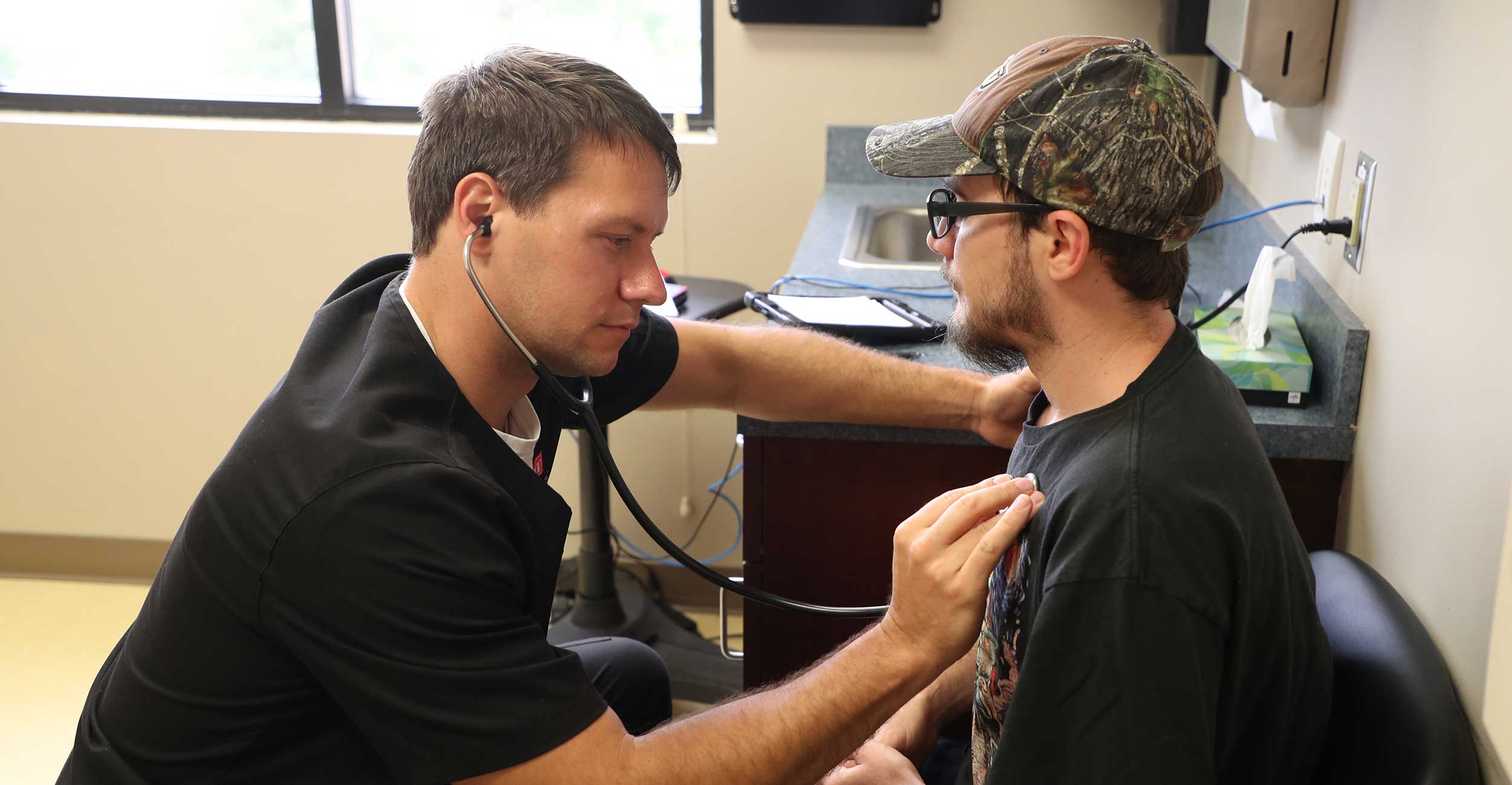
OSU-CHS awarded $16 million grant to improve health in rural, tribal and urban communities
Tuesday, November 14, 2023
Media Contact: Sara Plummer | Communications Coordinator | 918-561-1282 | sara.plummer@okstate.edu
The Health Resources and Services Administration recently awarded OSU Center for Health Sciences a $16 million grant to enhance the school’s recruitment, retention and training programs focused on rural, tribal, and urban and underserved populations in Oklahoma.
HRSA’s Medical Student Education Training Program grant will allocate $4 million to OSU-CHS each year over the next four years. The goal of the funding is to increase the number of primary care physicians practicing in Oklahoma.
According to HRSA, most counties and geographic areas in the state are designated as primary care Health Professional Shortage Areas. In 2023, U.S. News & World Report ranked OSU-CHS No. 1 in graduates practicing medicine in these shortage areas and No. 10 in graduates practicing medicine in rural areas.
OSU College of Osteopathic Medicine offers three specialized medical tracks for students to pursue that work to meet this health care need — the Rural Medical Track, Tribal Medical Track and the newest offering, the Urban Underserved Medical Track.
“Oklahoma faces a severe physician shortage that is exacerbated in our rural communities. Training physicians who are prepared to live and work in these underserved communities is vital to addressing the health care needs of Oklahomans and tackling the major health care disparities facing our state,” said Dr. Natasha Bray, dean of the OSU College of Osteopathic Medicine at the Cherokee Nation.
Some of the funding from the HRSA grant will bolster these medical tracks. Currently, students enrolled in the rural, tribal and urban underserved medical tracks must complete a two-week summer externship, but with the additional funds, these will expand to a six-week program where students will engage in track-specific clinical, didactic and community-based training.
Students participating in these medical tracks will also receive scholarships funded through the grant.
"Training physicians who are prepared to live and work in these underserved communities is vital to addressing the health care needs of Oklahomans and tackling the major health care disparities facing our state."
A focus of OSU-CHS has been to recruit students from rural, tribal and urban underserved communities because they are more likely to return to their hometown or a community like it to practice medicine.
Part of the grant funding will also support OSU-CHS’ graduate certificate in Medical Sciences program for those who have earned a bachelor’s or graduate degree and want to pursue medical school.
“This 19-credit hour graduate certificate in medical sciences supports the transition from undergraduate to medical school by supporting and preparing students for success through study skills development, standardized test preparation and clinical shadowing opportunities,” Bray said. “The curriculum provides a solid foundation in the basic science fields needed to be successful in medical school, but also demonstrates the health challenges facing patients living in rural, tribal and urban underserved communities.”
The grant funding will also support mental health and wellness programs, academic success programs, faculty and staff support, preceptor development and training, career mentorship initiatives and faculty development. It will also fund and support outreach programs aimed at high school and undergraduate students who may develop an interest in medicine or are already thinking about a career in health care.
“This grant allows us to continue our mission to prepare the next generation of primary care physicians to serve their neighborhoods and communities. We are deeply committed to creating educational opportunities for students growing up in Oklahoma to become a physician to serve their community,” Bray said. “Training physicians who have the knowledge and skills to serve their home communities helps create a healthy and thriving Oklahoma.”
